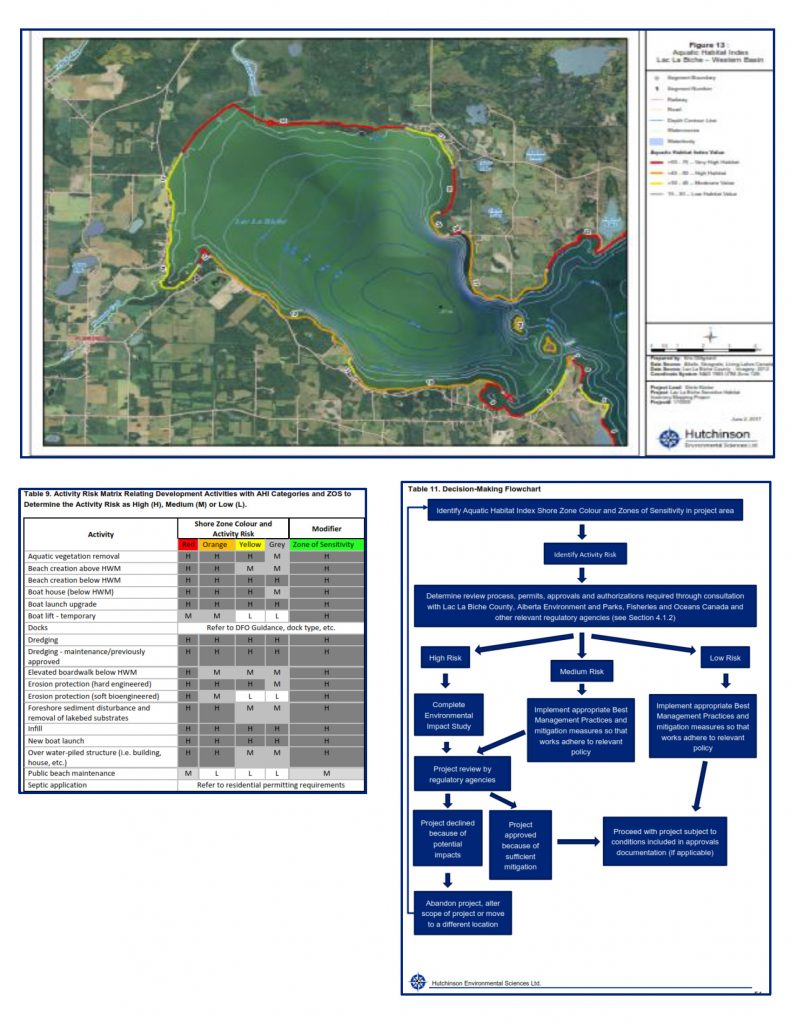Living Lakes Canada is a non-government organization on a mission to promote the protection, restoration and rehabilitation of watersheds across the country to address community concerns about the overall health of Lac La Biche (Alberta).
The client wanted to characterize the physical and biological features of the lake’s foreshore to identify, document and subsequently protect sensitive areas during shoreline land use planning.
We used existing mapping to conduct natural heritage assessments to identify zones of sensitivity to further development.
We evaluated potential impacts of development activity and identified best management practices to help minimize any negative environmental impacts of shoreline development.
We developed three land use planning and natural heritage protection tools:
- An Aquatic Habitat Index ranking the relative habitat value of shoreline segments based on degree of natural vs. disturbed condition and identifying zones of sensitivity.
- An Activity Risk Matrix rating the expected environmental impacts of common development activities that could occur within the foreshore of each shoreline segment.
- A Decision-Making Flowchart to guide applicants through the development approval process for shoreline development, including identifying shoreline habitat value and activity risk rating, determining required permitting, and recommending best management practices to avoid and mitigate negative impacts.
The newly developed Sensitive Habitat Inventory Mapping (SHIM) tools offer landowners and regulators a systematic, streamlined and science-based process for integrating ecological information into shoreline development decision-making along Lac La Biche.
Project Lead(s):
Client: Living Lakes Canada
Location: Lac La Biche, Alberta
Sector: NGO
Date of Project: January 2017 – July 2017
For examples of the tools highlighted, please contact Brent Parsons.
Services Provided:



